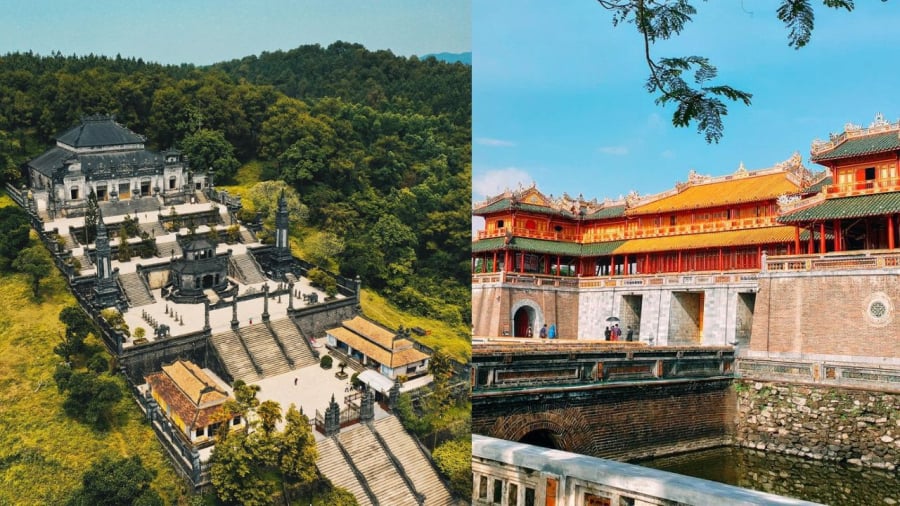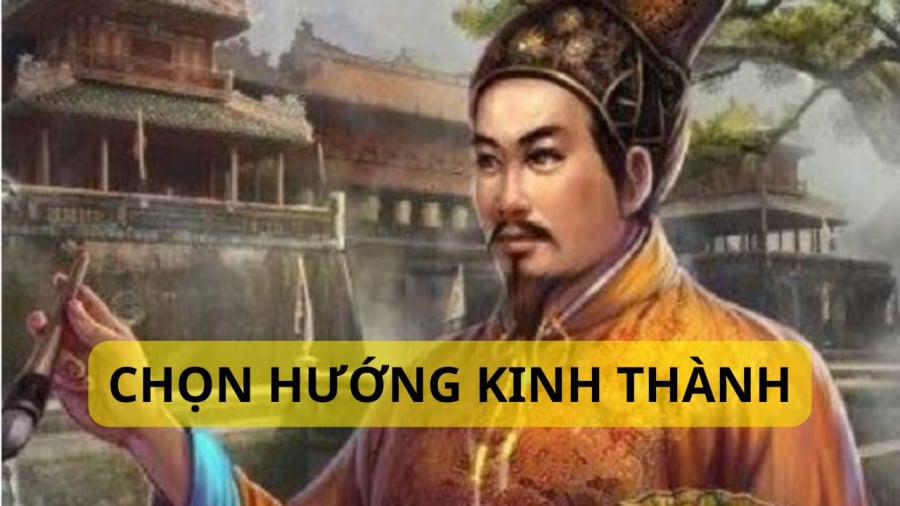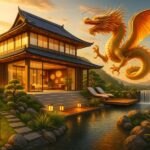The orientation of a house in ancient times was of utmost importance, not only for feng shui but also to suit the unique climate. Especially when people had a strong belief in spirituality and lived in harmony with nature, choosing the right direction became crucial.
Why did the palaces and houses of ancient kings and lords typically face south?
Vietnam’s tropical climate means the southern orientation is ideal for catching cool summer breezes and avoiding cold northern winds in winter. Additionally, southern-facing homes receive natural light without the harsh direct sunlight of east or west-facing properties.
From a scientific perspective, a south-facing house is the best option for a healthy and comfortable lifestyle. Inhabitants of such a house experience a cool and airy space, free from the stifling heat of summer and the bitter cold of winter. This environment promotes physical and mental well-being, reducing illnesses.

In terms of feng shui, the south is the most auspicious direction as it represents the sun, bringing positive energy and prosperity to the household. According to the Tiên thiên bát quái, the south corresponds to the Càn trigram, symbolizing nobility and authority. This is why royal palaces often embraced the southern orientation. In the Hậu thiên bát quái, the south is represented by the Ly trigram, symbolizing light, fire, and wisdom. Thus, kings ruled from the north, facing south to govern their realm.
Commoners built their houses facing south as a sign of loyalty and submission to the king, seeking wealth and honor.
Why did King Gia Long choose the southeast direction for the Hue Imperial City?
When constructing the Hue Imperial City, King Gia Long had to relocate and compensate a significant number of locals. He also chose an auspicious date for the commencement of construction. However, unlike traditional southern-facing palaces, he opted for a southeast orientation.
Was King Gia Long’s choice a departure from the preferences of other kings, or was there another reason for this decision?
According to historical records, King Gia Long commenced the construction of the inner circle of the Imperial City (the inner section of the Đại Nội) on May 9, 1804, with a total perimeter of 1,229 meters for the four sides. The brick walls stood at a height of 3.68 meters and were 0.72 meters thick.
Notably, the palaces were inscribed with the exact date and time of construction, indicating that King Gia Long held spiritual and feng shui beliefs similar to those of his predecessors.

However, to understand why the Hue Imperial City faces southeast, one must consider the unique geography of the site. The mountains, rivers, and dragon veins of the area are significant in feng shui. The rivers originating from the Truong Son mountain range flow in a northwest-southeast direction, with the Perfume River following the same path.
Thus, the optimal feng shui orientation for the Hue Imperial City is southeast, rather than the traditional south.
In the context of the Imperial City’s architecture, the front is associated with the chu tước (red sparrow), symbolizing the south and the element of fire. The left side (viewed from the outside) is the bạch hổ (white tiger), representing the west and the element of metal. The right side is the thanh long (green dragon), symbolizing the east and the element of wood. The back is the huyền vũ (black tortoise), representing the north and the element of water.
When constructing the Imperial City, these natural elements and principles of the five elements were considered to create balance and harmony. The five elements were also used to predict positions and plan the layout of the palaces.
In feng shui, the west is associated with the master, the east with the wife, friends, servants, valuables, and treasures—all that the master commands and uses. The back is associated with descendants, students, loyal ministers, and good generals. With water surrounding the Imperial City on all sides, the site is considered to be auspicious for wealth and water gathering. However, the west, the direction of the king, has a mountain range and the Perfume River meandering through it, making the metal element very strong, which can harm the wood element in the east. If the wood element is weak, it can lead to financial difficulties, trade issues, and illnesses, as the movement of metal can harm the house’s energy.
To counter this, King Gia Long built the Temple of Literature and the Thien Mu Pagoda in the west to stabilize the energy. This demonstrates his practical application of dịch lý (divination) and feng shui principles based on the specific geography of the Hue Imperial City.
If the Hue Imperial City had been built facing south, it would have created a 45-degree angle with the Perfume River, diminishing the feng shui values of the Minh đường, Thanh long, and Bạch hổ. By building it facing southeast, the river serves as the Minh đường, and the city benefits from the positive energy of the two small islands, Cồn Hến and Dã Viên.
The Perfume River flows against the typical feng shui direction, from south to north. However, when considering the broader context of the mountain range extending to the sea, forming the Hoành Long formation, this unique flow makes sense.
Additionally, the Perfume River’s meandering path and multiple turns indicate vibrant sinh khí (life energy). The gentle slope toward the Imperial City forms a Thủy Hử (water eddy) landscape, which, according to ancient beliefs, indicates a gathering of energy and the potential for a prosperous burial site. Thus, the site of the Hue Imperial City is considered auspicious in feng shui.
“2025: A Year of Great Fortune for These 4 Zodiac Signs – Home Construction, Exploding Wealth, and Easy Prosperity”
2025 is set to be an auspicious year for certain zodiac signs, especially when it comes to undertaking significant endeavors such as constructing or renovating a home. Prosperity and good fortune are predicted to flow, leading to a life of abundance and harmony. Get ready to uncover and embrace these golden opportunities.
3 Zodiac Signs Blessed with ‘Real Estate Luck’ in Summer 2025: Enhance Your Luck by Clearing Out the Southeast Corner of Your Home
This summer, according to the astrological forecast, three Chinese zodiac signs are believed to have auspicious opportunities to purchase a home. These lucky signs can further enhance their chances by harnessing the positive energy from the southeast direction of their current abode. Are you one of them? Find out now and don’t miss out on this rare and favorable timing!



































